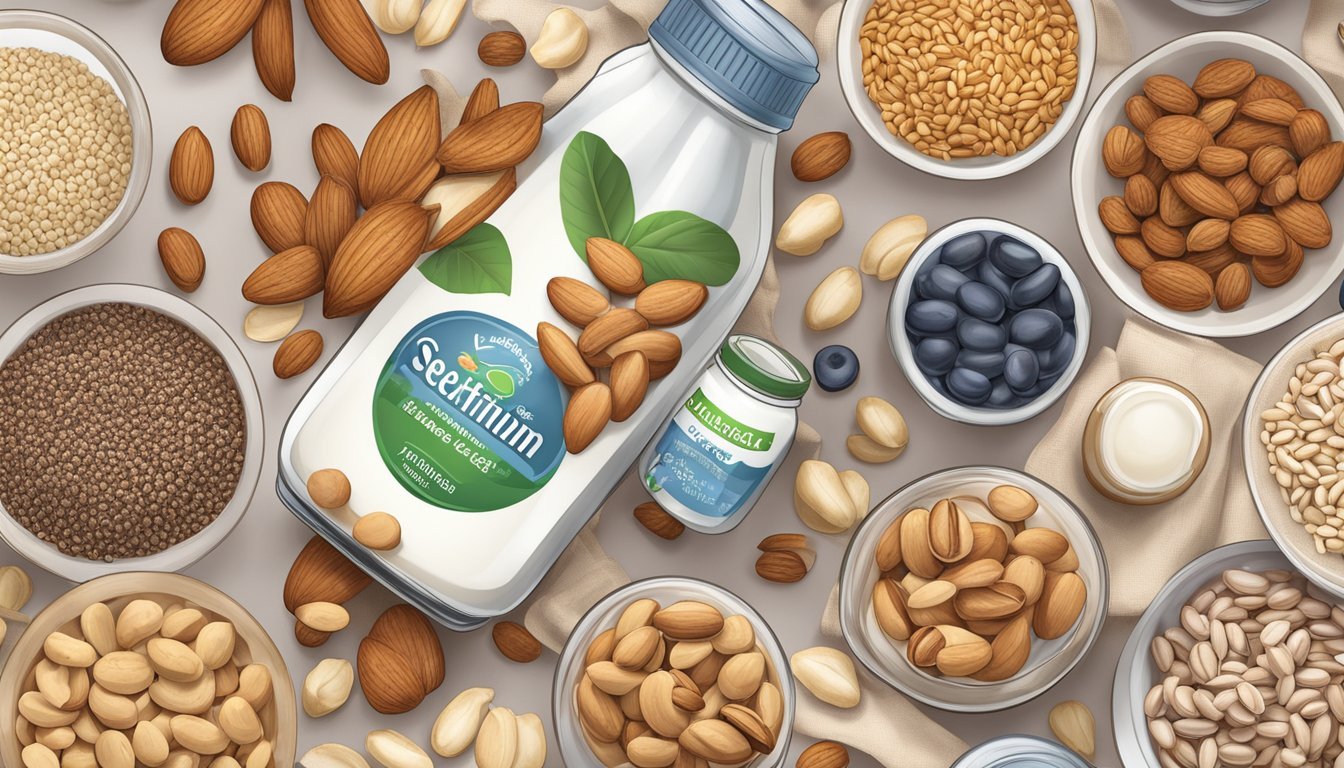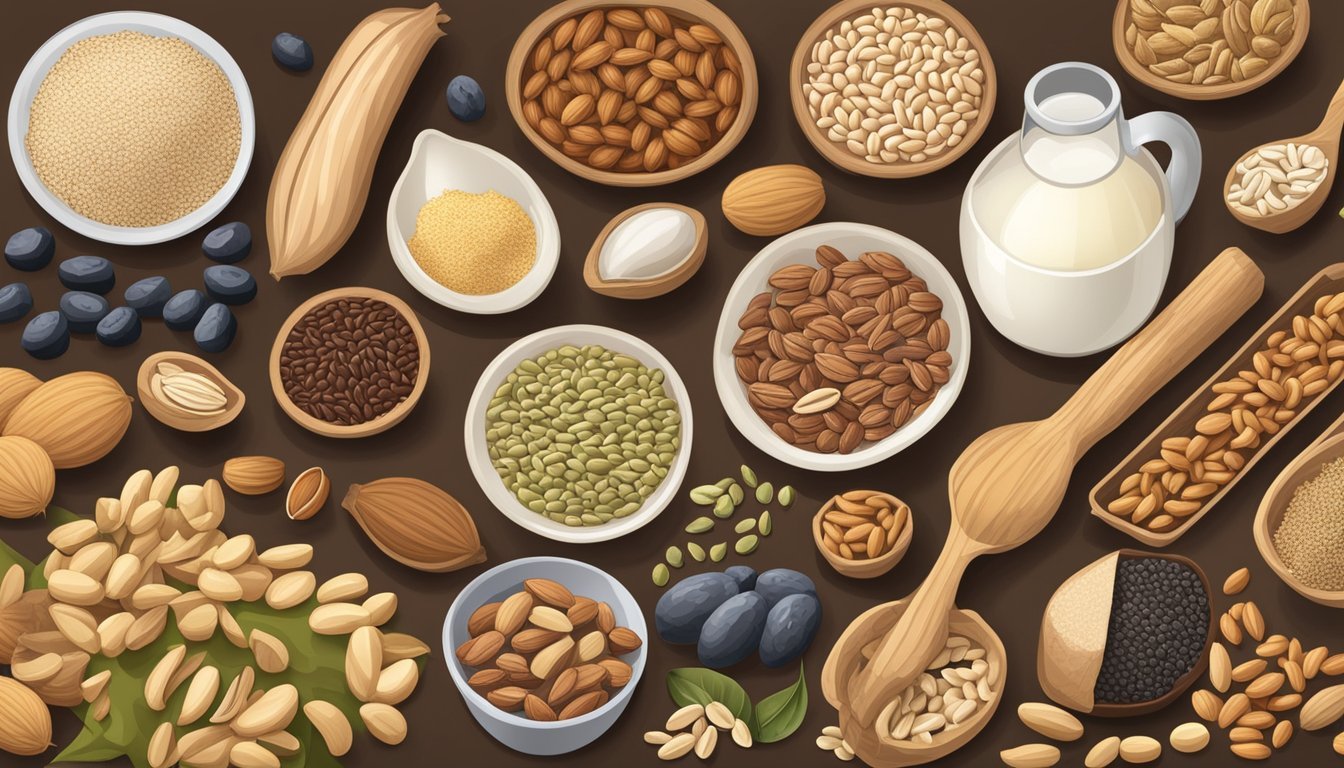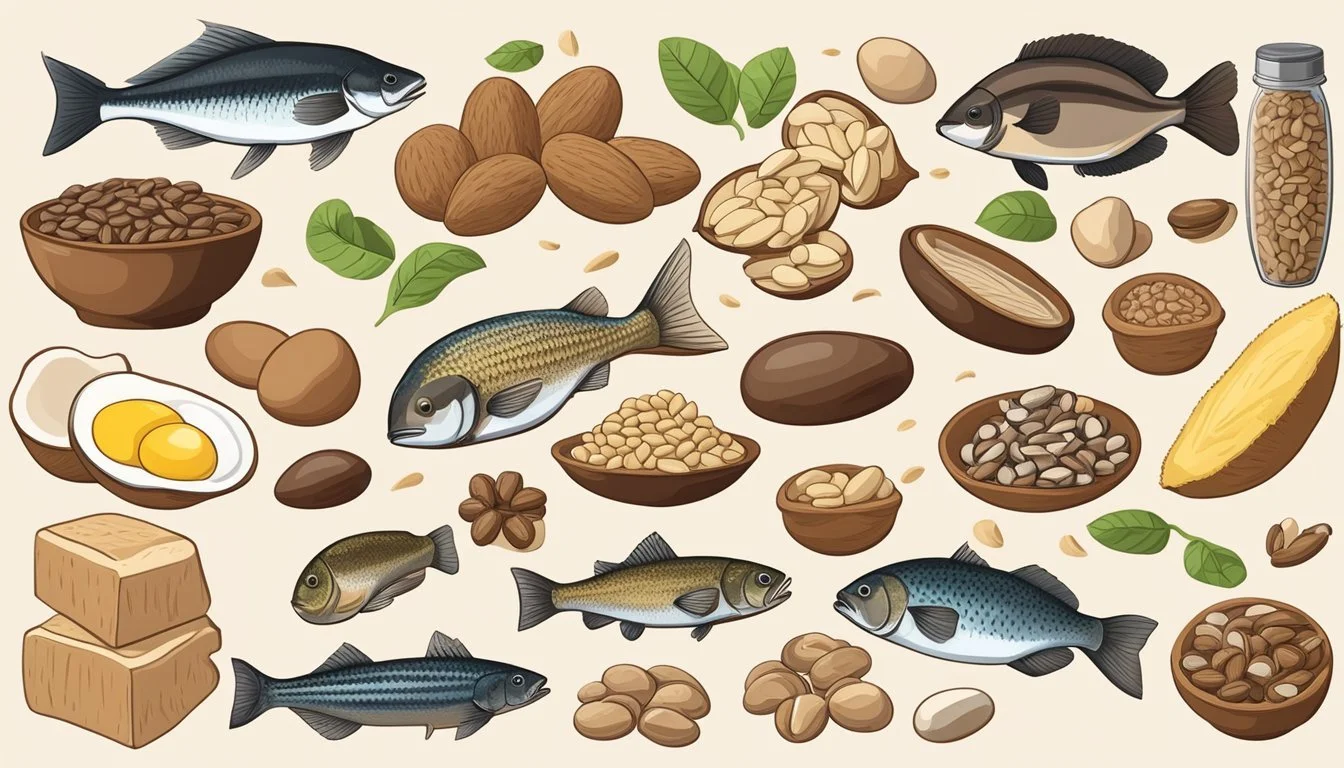How Can I Get Enough Selenium on a Lactose-Free Diet
Essential Sources and Tips
Selenium is a vital nutrient for maintaining overall health, as it plays a crucial role in the body's antioxidant defenses and the functioning of the immune system. For individuals who are lactose intolerant, ensuring adequate selenium intake can be a concern, as they must avoid dairy products which are common sources of various nutrients. Lactose intolerance necessitates alternative dietary strategies to meet the recommended selenium intake without the discomfort associated with consuming lactose-containing foods.
Fortunately, selenium can be sourced from a variety of non-dairy foods. Foods rich in selenium include nuts, particularly Brazil nuts, which are among the richest sources. Seafood such as tuna, halibut, sardines, and shrimp also provide significant amounts of selenium. For those who prefer plant-based sources, whole grains, seeds, and certain vegetables like mushrooms and spinach can contribute to the daily selenium requirement. Ensuring a varied diet with these selenium-containing foods can help those with lactose intolerance meet their nutrient needs without the use of dairy products.
Incorporating these selenium-rich foods into regular meals requires both awareness and consideration of overall dietary balance. It's important to accommodate individual nutritional needs and preferences while considering the potential for nutrient interactions. For example, pairing foods high in selenium with vitamin C-rich foods can enhance absorption. As with any dietary change, it may be helpful to consult with a healthcare professional or a nutritionist to ensure that nutritional requirements are met adequately and safely.
Understanding Lactose Intolerance
Lactose intolerance affects individuals by hindering their ability to digest lactose, leading to various digestive symptoms. Thorough comprehension of this condition is essential, from its definition and symptoms to the types and diagnostic methods.
What Is Lactose Intolerance?
Lactose intolerance occurs when a person's small intestine does not produce an adequate amount of lactase, an enzyme needed to digest lactose—the sugar found in milk and dairy products. Without sufficient lactase, lactose moves through the colon undigested, causing uncomfortable symptoms.
Symptoms of Lactose Intolerance
Individuals with lactose intolerance typically experience diarrhea, gas, and bloating after consuming dairy products. These symptoms often present themselves within a few hours and vary in severity depending on the amount of lactose ingested and the individual's level of lactase deficiency.
Primary, Secondary, and Congenital Types
Lactose intolerance is categorized into three types:
Primary Lactose Intolerance: The most common form, where lactase production decreases over time due to age or genetic factors.
Secondary Lactose Intolerance: This form develops due to injury to the small intestine from illness, surgery, or treatment.
Congenital Lactose Intolerance: A rare condition where a baby is born with a reduced ability to produce lactase due to genetic mutation.
Diagnosing Lactose Intolerance
To diagnose lactose intolerance, physicians may conduct a breath test to measure hydrogen levels after lactose consumption, indicative of improper digestion. Alternatively, a stool test can be administered, particularly for young children and infants, to detect acidity that arises from undigested lactose.
Dietary Sources of Selenium
Selenium is an essential mineral found in various foods, with certain sources being particularly rich in selenium and suitable for those with lactose intolerance.
Selenium in Common Foods
Selenium content varies widely across different foods. Here's a list illustrating the typical selenium content in common foods:
Nuts (especially Brazil nuts): One ounce can contain up to 544 mcg of selenium.
Fish: Tuna, halibut, and sardines are good sources.
Meat: Beef and pork are rich in selenium, with lean pork providing about 33 mcg per three ounces.
Eggs: Another excellent source, contributing to daily selenium intake.
Bread and Cereals: Whole grain and enriched varieties often contain selenium.
Vegetables: Although the amounts can be lower, vegetables like broccoli contribute to the intake.
Selenium Content in Lactose-Free Foods
For those avoiding dairy, lactose-free options to ensure adequate selenium intake include:
Tofu and Soy Products: Tofu and soy milk are not only lactose-free but also contain selenium.
Nuts and Almonds: Specified as a snack or added to meals, these are suitable selenium-rich options.
Seeds: Sunflower and chia seeds provide a healthy, dairy-free snack with selenium.
Cereals: Breakfast cereals, particularly those that are fortified, can be a significant source of selenium.
Processed Foods: While these should be consumed in moderation, certain processed foods are fortified with selenium.
Alternatives to Dairy Products
For those who are lactose intolerant and seeking to increase their selenium intake, there are several non-dairy alternatives. They can enjoy lactose-free dairy options, calcium-rich foods that are not dairy, and lactose-free nutritional supplements to meet their dietary needs.
Lactose-Free Dairy Products
Lactose-free dairy products are processed to remove lactose or have lactase added to break down the lactose, making them more digestible for individuals with lactose intolerance. These products maintain similar levels of calcium and other nutrients found in regular dairy.
Lactose-Free Milk: Similar in nutrient profile to regular milk but with added lactase for easier digestion.
Hard Cheeses: Some hard cheeses like Parmesan contain minimal lactose due to the aging process.
Lactose-Free Yogurt: Fermentation lowers lactose content; additionally, some brands add lactase.
Non-Dairy Calcium-Rich Foods
For lactose-intolerant individuals, a variety of non-dairy foods can provide the necessary calcium and often have additional health benefits.
Green Leafy Vegetables: Kale, broccoli, and spinach are examples of vegetables high in calcium.
Fortified Foods: Some plant-based milks and juices are fortified with calcium to mimic the nutrient content of dairy.
Lactose-Free Nutritional Supplements
Supplements can help meet the nutritional gaps for those avoiding dairy. Options include:
Calcium Supplements: Ensure they contain calcium citrate or carbonate for better absorption.
Vitamin D: Often partnered with calcium supplements to improve bone health.
Probiotics: Helpful for gut health, available in lactose-free formats.
Lifestyle Changes and Management
For individuals who are lactose intolerant, achieving sufficient nutrition, particularly selenium, requires strategic dietary adaptation and effective management techniques. This approach ensures one can maintain a balanced diet while addressing the underlying enzyme deficiency that causes lactose intolerance.
Adapting Your Diet for Lactose Intolerance
Individuals who are lactose intolerant lack adequate levels of the enzyme lactase, produced in the small intestine, to properly digest lactose, the sugar found in dairy products. Adapting one's diet is essential to manage this condition. They should focus on incorporating selenium-rich foods that are naturally lactose-free.
Selenium sources for a lactose-intolerant diet include:
Nuts and Seeds: Brazil nuts are an excellent source; however, limit intake as they are very high in selenium.
Fish: Tuna, halibut, and sardines are good choices.
Meat: Beef, liver, and poultry provide selenium.
Grains: Brown rice and whole-wheat bread can contribute to selenium intake.
It is critical to consider nutrition labels and choose lactose-free or low-lactose alternatives, which are increasingly available. Age and individual tolerance levels can affect how one adapts their diet, as younger people might tolerate more lactose than older adults.
Effective Management Techniques
Effective management of lactose intolerance involves lifestyle changes aimed at reducing symptoms while maintaining proper nutrition. Management strategies include:
Enzyme supplements: Taking lactase enzyme supplements before consuming dairy can help digest lactose.
Gradual introduction: Some can tolerate small amounts of lactose and may benefit from gradually introducing dairy to build tolerance.
Dairy alternatives: Soy, almond, and rice milks are fortified with calcium and other nutrients to ensure a balanced diet.
Probiotics: These can improve gut health and may assist in lactose digestion.
By understanding the causes of lactose intolerance and implementing these management techniques, individuals can effectively reduce symptoms and maintain a healthy lifestyle.
Medical Advice and Treatment Options
Addressing selenium deficiency in individuals who are lactose intolerant requires professional medical advice and may involve specific treatments. Ensuring the right balance of nutrients while managing lactose intolerance is crucial for overall health.
When to Consult a Doctor
One should consult a healthcare provider if they experience symptoms indicative of a selenium deficiency, such as fatigue, hair loss, or weakened immune function. Additionally, individuals with lactose intolerance who exhibit signs of nutrient deficiencies, such as cramps, nausea, or vomiting, may also require a medical evaluation. A doctor can perform blood tests to confirm selenium levels and assess for any other conditions, such as lactase deficiency, which may impact nutritional status.
Medical Treatments for Deficiency
If diagnosed with a selenium deficiency, medical professionals can recommend a treatment plan that does not exacerbate lactose intolerance. This plan often includes:
Supplements: Selenium supplements are an option, yet the dosage must be carefully managed to avoid toxicity.
Enhanced Diet: Including selenium-rich, lactose-free foods, such as nuts, meats, and seafood, can effectively raise selenium levels without causing discomfort from lactose.
Lactase Enzyme: For those with lactase deficiency, lactase enzyme supplements can enable digestion of dairy products, potentially allowing for a broader range of selenium-containing foods.
Patients should always follow the prescribed treatment regimen and dosage recommendations provided by their healthcare practitioner to improve their selenium intake safely.






